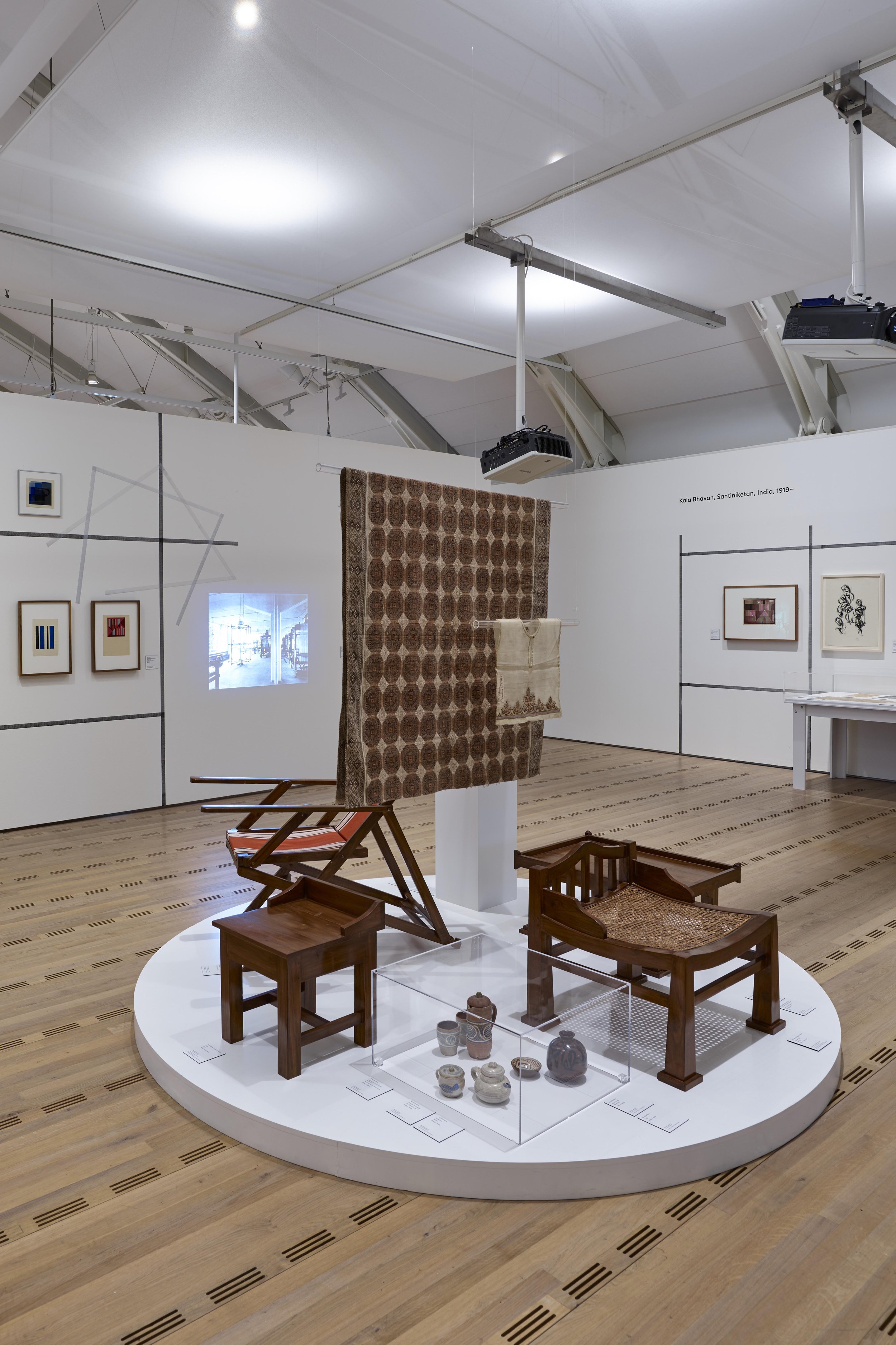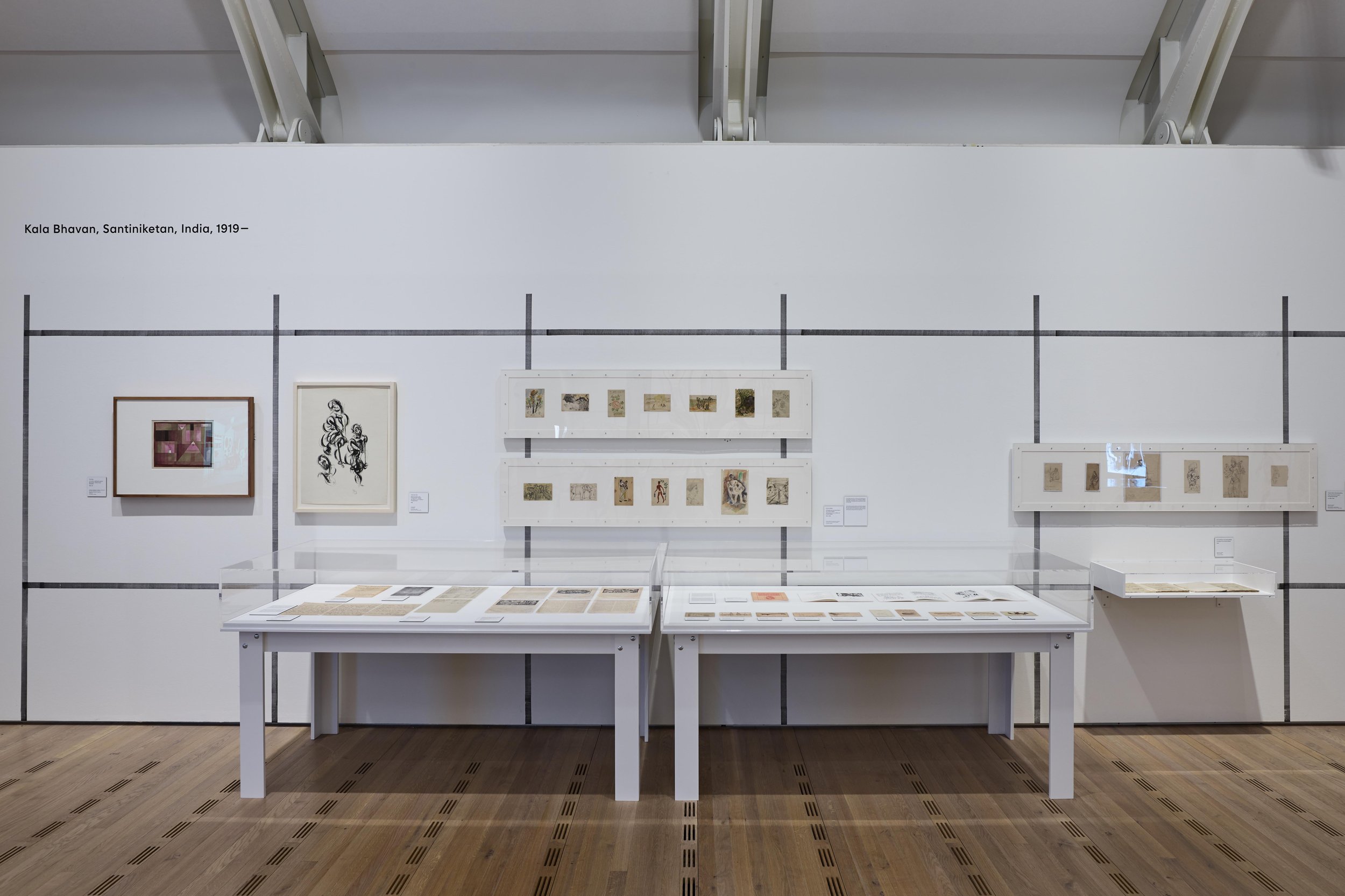
bauhaus imaginista
Haus der Kulturen der Welt, Berlin
15.03.19—10.06.19
Zentrum Paul Klee, Bern
20.09.19—12.01.20
Curators Marion von Osten and Grant Watson, in collaboration with an international team of researchers
Exhibition design for the chapter ‘corresponding with’ Luca Frei
bauhaus imaginista is a major international project that marks the school's centenary. bauhaus imaginista It is structured around four chapters titled: "corresponding with," "learning from," "moving away," and "still undead." It opens up a transnational perspective on modernist art and design history through site-specific exhibitions, events, and publications between 2018 and 2020.
The worldwide circulation of Bauhaus concepts is not understood as a history of impact and influence but as part of a network of international linkages and exchange relationships. The chapter "corresponding with" starts with the Bauhaus Manifesto of 1919, written by Walter Gropius. It places the experience of the Staatliches Bauhaus Weimar in dialogue with two other pedagogical experiments - the Kala Bhavana art school in Santiniketan, north of Kolkata, inaugurated by the Indian poet Rabindranath Tagore, and the educational experiment Seikatsu Kosei Kenkyusho (Research Institute for the Design of Life), founded in Tokyo by Renshichiro Kawakita in 1931.
The exhibition design for "corresponding with" at Haus Kulturen der Welt has structured around three large hand-painted murals on three walls, each dedicated to one of the schools. The grid has the same proportions as the ceiling lighting support, creating a link to the architecture while recalling the square paper of the notebooks - a nod to the pedagogical material on display. Details from Lena Bergner's studies from Paul Klee's course, also on display, are the starting point for graphic elements in the mural. Vitrines, shelves, and cable-supported wall tables are all structured around the grid, creating a light, structured, playful space. The presentation was later adapted to the Zentrum Paul Klee exhibition spaces, where the low walls and wooden floor offered a warmer and more intimate encounter with the works.
The installation Model for a Pedagogical Vehicle, first presented at The National Museum of Modern Art Kyoto in 2018 and later included in the displays at HKW and Zentrum Pauk Klee, draws on archive material documenting the first Bauhaus exhibition in Japan in 1931. The self-supporting structure presents readings of the archive material in graphic and sculptural form, creating an interplay of associations between the various elements.
Webpage bauhaus imaginista's webpage
Further reading
Yuki Higashino, “bauhaus imaginista at the Haus der Kulturen der Welt,” The Avery Review, 2019
bauhaus imaginista is a joint project by the Bauhaus Kooperation Berlin Dessau Weimar, Goethe-Institut and Haus der Kulturen der Welt, funded by the Ministry of Foreign Affairs and Federal Cultural Foundation, on the occasion of the centenary ‘100 years of bauhaus’.
Haus der Kulturen der Welt, 2019. Photo: Laura Fiorio/HKW
Zentrum Paul Klee, 2019-2020. Photo: Rolf Siegenthaler








